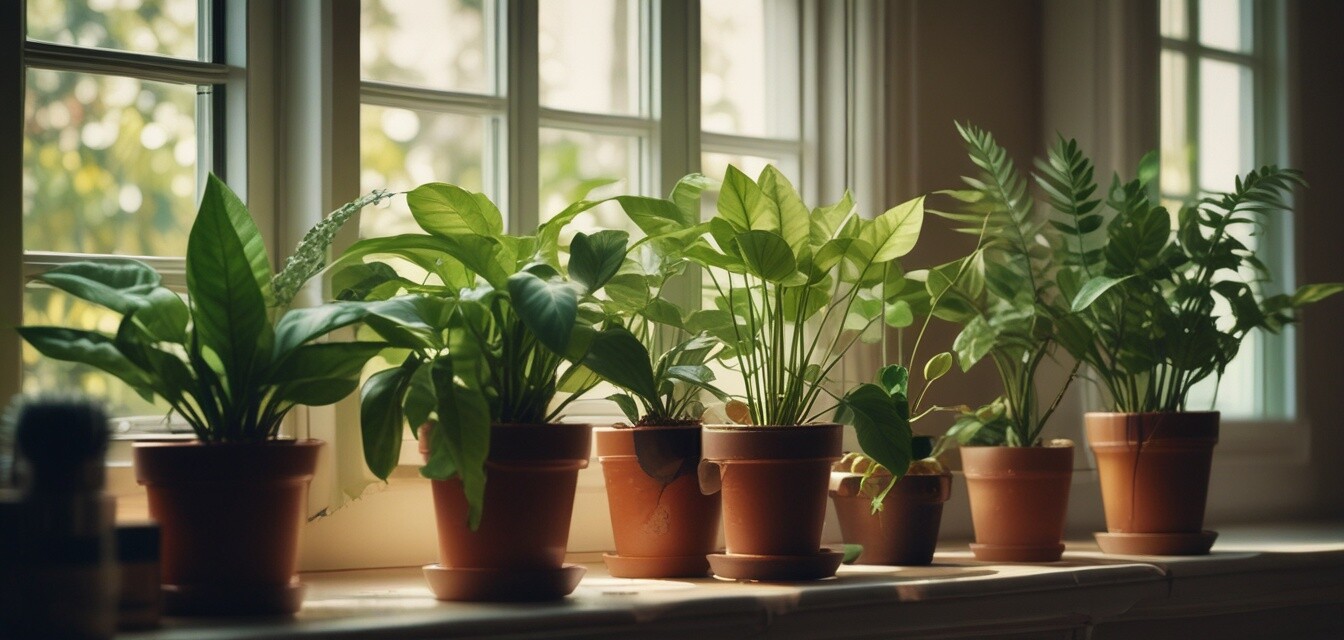
Signs of stress in houseplants and how to fix them
Key Takeaways
- Common signs of stress include yellowing leaves, wilting, and stunted growth.
- Addressing lighting, watering, and pests can revive stressed plants.
- Regular monitoring helps catch problems early.
Caring for houseplants requires a close eye and some knowledge about the signs they show when they're stressed. Whether it’s a slight droop or a rapid yellowing of the leaves, understanding these signals is crucial for maintaining a healthy indoor garden. In this article, we will discuss the common signs of plant stress and how to effectively address these issues to bring your plants back to health.
Common signs of stressed houseplants
Plants communicate their needs and discomfort through various signs. Below are some common signs of stress in houseplants:
| Sign of Stress | Description |
|---|---|
| Yellowing Leaves | Indicates overwatering, nutrient deficiency, or insufficient light. |
| Wilting | Can be caused by underwatering or root problems. |
| Stunted Growth | Often a result of poor light conditions or insufficient nutrition. |
| Brown Leaf Tips | Usually due to low humidity or water stress. |
| Drop of Leaves | Typically caused by sudden environmental changes or improper watering. |
Identifying the cause of stress
Once you've recognized the signs of stress in your plants, it’s essential to pinpoint the underlying causes. Here are some common stressors:
- Improper watering: Both overwatering and underwatering can create stress. Ensure you have a proper watering schedule based on the plant's needs.
- Inadequate lighting: Different plants have different light requirements. Assess whether your plant is getting enough sunlight.
- Nutrient deficiencies: Plants need various nutrients for optimal growth. If they are not receiving enough, they can show signs of stress.
- Pest infestations: Pests can cause physical damage to your plants and lead to stress. It’s important to regularly check for any unwanted guests.
How to fix stressed houseplants
Now that you have identified the signs and potential causes of stress, let’s explore effective strategies to bring your houseplants back to health:
- Assess and adjust watering: Check the moisture level of the soil. If it’s too wet or too dry, adjust your watering schedule accordingly.
- Improve lighting conditions: If your plant is not receiving enough light, consider moving it to a brighter area or utilizing grow lights.
- Fertilize appropriately: Use balanced fertilizers to replenish nutrients, following package instructions closely.
- Treat pest infestations: Use natural or chemical pest control methods to eliminate any pests that might be affecting your plants.
- Boost humidity: For plants that require higher humidity, consider using a humidifier or placing a tray of water near the plant.
Preventing future stress in houseplants
Prevention is better than cure. Here are some tips to help keep your plants healthy and reduce stress:
- Regularly monitor the health of your houseplants.
- Create a consistent care routine including watering, fertilizing, and pruning.
- Research the specific needs of each plant species.
- Provide good airflow around your plants to reduce humidity-related issues.
- Rotate your plants periodically to ensure even light exposure.
When to seek professional help
Sometimes, despite your best efforts, your plants may need professional intervention. Here are scenarios where you might want to consult an expert:
- Severe pest infestations that you can’t control.
- Plants that consistently show signs of stress despite adjustments.
- Issues that are too complicated to diagnose on your own.
Beginner’s section: Quick troubleshooting guide
If you’re a beginner, use the following quick troubleshooting guide:
| Issue | Quick Fix |
|---|---|
| Leaves turning yellow | Check watering routine and light exposure. |
| Wilting leaves | Check soil moisture – water if too dry. |
| Browning tips | Increase humidity or adjust watering schedule. |
Pros
- Encourages healthy growth.
- Completely revitalized plants.
- Increased chances of flowering and fruiting.
Cons
- Can require time and patience.
- Potential for over-correction.
- May need initial investment in supplies.
By recognizing the signs of stress and implementing the right solutions, you can ensure your houseplants thrive in your home. Addressing problems early on leads to vibrant, healthy greenery that brightens your living space.
For more tips on plant care, check out our Care Tips section or get insights on air-purifying plants that can enhance your home. Ensure you never miss an update by visiting our News and Trends section regularly!

